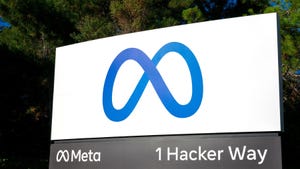iDataCenter Will Use Landfill-Powered Bloom BoxesiDataCenter Will Use Landfill-Powered Bloom Boxes
Apple will use biogas from landfills to generate electricity for its massive data center in North Carolina, the company said in a regulatory filing. The biogas will be converted into power using fuel cells from Bloom Energy,
April 30, 2012


bloom-ebay
A look at the Bloom Energy Servers installed on the eBay campus in San Jose. Apple will use 24 biogas-fueled Bloom boxes at its North Carolina data center. (Photo: Bloom Energy)
Apple will use biogas from landfills to generate electricity for its massive data center in North Carolina, the company said in a regulatory filing. The biogas will be converted into power using fuel cells from Bloom Energy, which is ramping up its production to meet demand from Apple and other new clients.
In February Apple announced plans to deploy a huge solar array and a 5 megawatt fuel cell facility at its iDataCenter in Maiden, North Carolina. State filings revealed that Bloom Energy would provide the fuel cells, but there were fewer details about the fuel source.
Apple will use methane from landfills, which will be transported via a natural gas pipeline system, according to a filing with the Federal Energy Regulatory Commission (FERC). The raw biogas will be cleaned and separated to increase the methane content and remove unwanted components (including sulfide, chlorine and sulfur) before being injected into the natural gas pipeline.
Microsoft Also Eyes Biogas for Data Centers
Apple isn't the only large data center operator pursuing this strategy. Microsoft is planning to build data plants where modular data centers will be powered by renewable energy, including biogas from water treatment plants and landfills.
Apple says that using biogas will reduce greenhouse gas emissions and pollutants while diversifying the fuel mix for its data center energy. The announcement of the fuel cell sparked speculation that Apple might use biogass from pig manure as a fuel source. But the FERC filing indicates that Apple will use landfill gas rather than manure digester gas.
The installation is expected to feature 24 200-kilowatt Bloom Energy Servers placed on outdoor pads, according to regulatory filings. Bloom Energy is converting a former Chrysler auto assembly plant in Delaware into a manufacturing facility to churn out its Bloom Energy Servers for East Coast customers, including Apple.
The Bloom Energy Server is based on solid oxide fuel cell technology that converts fuel to electricity through an electro-chemical reaction, without any combustion. Because they are housed at the customer premises, the Bloom box can continue operating during grid outages.
"Once the Bloom Energy Manufacturing Center is completed, we will double Bloom Energy’s production capacity," said KR Sridhar, Principal Co-Founder and Chief Executive Officer of Bloom Energy. "Delaware complements our California roots and strategically positions us to better serve our expanding customer base."
Bloom Gains Traction in Data Center Sector
The Apple deal is the largest step yet in Bloom's focus on the data center industry. Bloom has seen good traction from data center providers in California, stemming partly from concerns about future energy pricing in the state. In 2011 both AT&T and NTT announced purchases of Bloom units to support their data centers in California.
Last month Bloom hired industry veteran Peter Gross to head its new Mission Critical Practice, which will focus on deploying Bloom boxes in new configurations in which they play a more central role in the power infrastructure. Gross sees Bloom boxes powered by natural gas serving as the primary form of power, with the utility grid used as a backup service. This configuration envisions dual-corded servers, with one input from the Bloom and the other from the grid. This approach would allow data center operators to reduce their reliance on diesel backup generators.
The Bloom Energy Manufacturing Center will become the anchor tenant of the new University of Delaware Science, Technology and Advanced Research Campus. Construction is expected to be completed in mid-2013, with manufacturing set to begin shortly afterwards.
About the Author
You May Also Like







